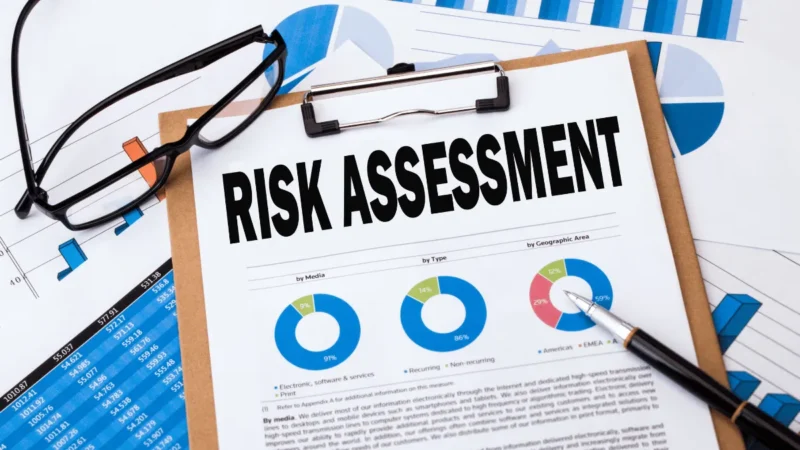In today’s global business environment, organizations must be proactive about assessing the risks associated with their suppliers and other partners to ensure smooth operations, cost savings, quality control initiatives, and compliance requirements are all met. So, supply chain risk assessment is important for business success.
Performing a comprehensive risk assessment of your company’s supply chain can give you valuable insight into areas that could potentially disrupt operations or have costly outcomes. Keep reading!
What is the global supply chain?
The global supply chain is a complex web of interconnected businesses that work together to deliver goods and services to customers. Despite the many benefits of this system, it is not without its risks. Supply chain risks, also known as supply chain disruptions, can occur at any point in the chain and can have serious consequences for all parties involved.
Some common supply chain risks include natural disasters, political unrest, supplier bankruptcy, and quality control issues. These risks can result in delays, price increases, lost revenue, and damage to a company’s reputation. Therefore, it is essential for businesses to assess and manage these risks in order to ensure a resilient supply chain.
Utilize data analytics to further understand and analyze trends in the supply chain.
In today’s highly competitive marketplace, utilizing data analytics has become imperative for businesses. When it comes to managing the flow of goods from manufacturers to customers, you should use AI supply chain analytics software so that you can take advantage of the market’s trends and patterns. Data analytics help businesses identify inefficiencies, optimize processes, and reduce costs.
With the help of advanced analytics techniques, businesses can gain a competitive edge in today’s fast-paced business environment.
Establish a risk management plan and strategy.
Risk management is an essential aspect of any business strategy. Organizations that lack plans for risk management may face severe consequences, including financial loss or damage to their reputation.
A comprehensive risk management plan and strategy put measures in place to mitigate them. The goal of risk management is not merely to prevent risks altogether but to provide a solid foundation on which businesses can navigate unforeseen issues. Keep in mind that risk management is not a one-size-fits-all approach, and tailored strategies must be developed to suit each business’s specific requirements.
Identify potential risks to the supply chain.
In today’s globalized economy, the supply chain is more complex than ever before. While this interconnectedness offers new opportunities for growth, it also comes with increased risks. Identifying these risks is crucial for companies to mitigate potential disruptions to the supply chain. Supply chain risks can be both internal and external.

Internal supply chain risks
Internal supply chain risks are those related to the organization and include factors that you have control over. These include:
- Manufacturing risks: Issues related to the production process such as quality control, labor shortages, and delays.
- Business risks: Issues related to finance, operations, and strategy.
- Planning and control risks: Issues related to production scheduling and inventory control
- Mitigation and contingency risks: Issues related to the organization’s preparedness for unexpected risks.
External supply chain risks
External supply chain risks are those related to external factors that the organization has no control over. These include:
- Market risks: Issues related to changes in demand and supply, including raw material costs and customer preferences.
- Political and regulatory risks: Issues related to changes in global or local laws, regulations, or political environments.
- Geopolitical risks: Issues related to regional and global political events that could disrupt the supply chain.
- Technology risks: Issues related to technological innovations or disruptions in technology that could impact the supply chain.
Evaluate the level of risk associated with each identified event
Evaluating the level of risk associated with each identified event is a crucial task that businesses need to undertake to ensure the safety and well-being of their employees and the continuity of their operations. Risk assessment involves identifying potential hazards and evaluating their likelihood of occurrence and the severity of their impact.
Take a comprehensive and systematic approach to risk assessment, considering location, nature of work, and the characteristics of the workforce. Conducting regular risk assessments can help businesses identify potential problems and implement appropriate measures to mitigate the risks and ensure regulatory compliance. By proactively managing risks, businesses can protect their employees, customers, and assets while reducing downtime and avoiding costly legal and financial liabilities.
Develop controls, processes, and procedures to mitigate the risks.
For any organization to remain secure and safe, controls, processes, and procedures must be put into place. To accomplish this, the first step should be analyzing operations and data — organizations can proactively track possible risks that may arise in the future. This way, if an incident or breach does occur, organizations can take immediate action to mitigate any potential harm.
All users at a company should have a detailed understanding of each process which could potentially protect against insider threats by accounting for every user’s actions. Taking these steps will help all companies be prepared for any future risks or incidents that may arise.
Monitor and review the performance of these processes on a regular basis
As a business owner, it’s crucial to monitor and review the performance of your processes regularly. Doing so can help you identify areas for improvement, potential bottlenecks, and gaps in your operations.
You can also ensure that your team is working efficiently and effectively, which can ultimately lead to increased productivity and profitability. Consider setting up regular performance reviews or check-ins to assess how your processes are performing and gather feedback from your team. This information can then be used to make strategic decisions and adjustments to ensure that your business is operating at its best.
Conclusion
All in all, anticipating and managing potential risks to the supply chain is vital for businesses to maintain a performance edge. Unfortunately, in a constantly changing business landscape with fluctuating trends, this kind of risk management strategy needs to be updated regularly. With data analytics and state-of-the-art technology tools at hand, firms can become better at identifying the right set of risks and develop effective strategies to prepare the company against any possible disruptions or losses.





